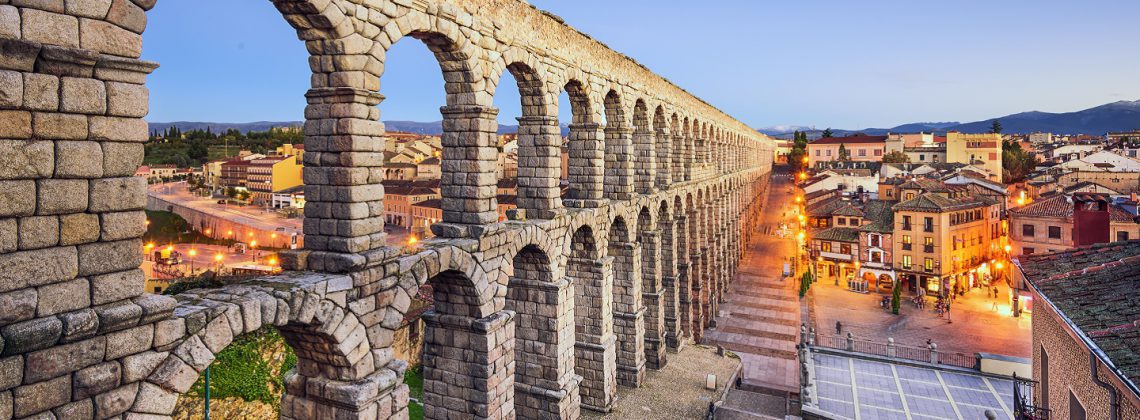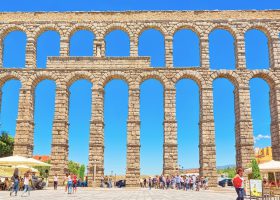The aqueduct of Segovia is one of the most emblematic monuments in the city. However, a lot of people miss out on learning more about its fascinating history. Perhaps, this is because it is a little obvious as a monument and often taken for granted. But don’t worry! Here are some amazing facts to help you understand the aqueduct of Segovia, written by a historian.
Pro Tip: It’s easier to organize your trip when you have all your resources in one place. Bookmark this post along with our exciting Segovia tours from Madrid and the top things to see in Segovia.
9 Things You Should Know About the Aqueduct of Segovia
Imagine standing under a 93-foot tall structure that has carried water to the city since Roman times! This wonderful piece of architecture is the key symbol of the city of Segovia. It is the first monument most tourists see when they arrive to the city on foot or on the road. Towering with its two arcades (rows of arches) over the Plaza del Azoguejo, this aqueduct is part of the remaining legacy of the Romans in Spain.
Recent studies date this to the 2nd century AD, likely under the rule of emperor Trajan. So we invite you to read on to discover some of its interesting history that’s often overlooked. You’ll be even more excited to come visit Segovia after you understand the many reasons why this ancient aqueduct is extraordinary.
Not ready to book a tour yet? See how to visit the Segovia aqueduct for more info.
9. Discover the Interpretation Center
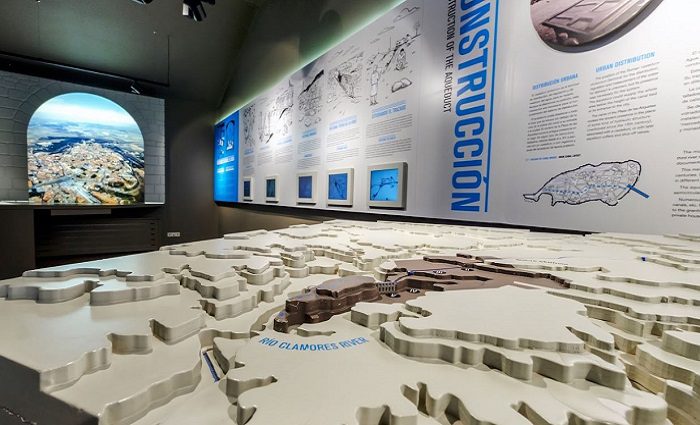
Make your trip easy by learning the real history of the aqueduct at the Interpretation Centre at the Royal Museum of the Mint of Segovia (Real Casa de la Moneda). The Interpretation Centre is just one part of this amazing museum.
The site was once the mint in the city of Segovia, so you can still see coins that used the shape of the aqueduct as its mint marker! You’ll see dioramas of what Segovia looked like centuries ago as you learn just how ingenious the Roman architecture was since it lasted two millennia.
Pro tip: The Interpretation Centre is only open Wednesday through Sunday. Check their website for exact times. Cost starts at €4.50.
Location: C. la Moneda, 3 (Interpretation Center is across from the Royal Museum of the Mint)
8. Not Just an Aqueduct!
Often in the Roman world, aqueducts had a dual purpose, according to Maria Lourdes Martinez de Moretin Llamas. Aside from bringing water to the city, their monumental size and arcades also served as the main entrance to the city.
In the case of Segovia, this Roman layout of the city and its infrastructure is still true. In fact, most tourists arriving to the town either by foot or on the road will first come into the city center under the magnificent arches of the aqueduct. It’s truly the gateway into Segovia.
7. Engineered Without Cement or Mortar
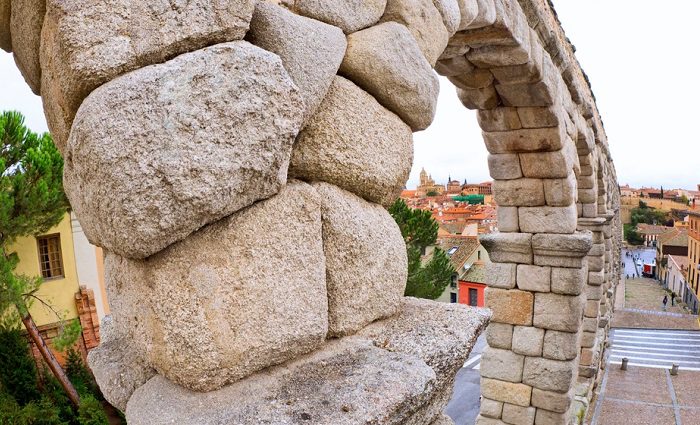
The aqueduct is considered the most important feature of Roman engineering in the whole of Spain. According to Narciso Casas, the Romans build it with 25,000 slabs of granite without any kind of cement or mortar! Can you imagine how they accomplished that?
The tallest part of the aqueduct measures 93.5 feet (28 meters), made with the double arcades that include 165 arches total. Moreover, Araceli Cabezas Lopez explains that the aqueduct was built keeping the terrain in mind. That means there are parts of its length where we can see thicker pillars at the bottom to keep the structure stable. Seems to have paid off!
6. Reconstructions
It is not surprising to know that, given the size of the structure, there were some reconstructions and things that needed fixing in the aqueduct throughout its lifetime. Narciso Casas recalls that in the 11th century, during the time of the Spanish Reconquista, the Muslim army damaged part of the aqueduct.
In the first section of aqueduct, you can see some pointed arches that were restored in the 15th century. They look just a bit different from the rest, and now you know why.
Not ready to book a tour yet? See our Madrid Guide for more info.
5. Water and Maths!
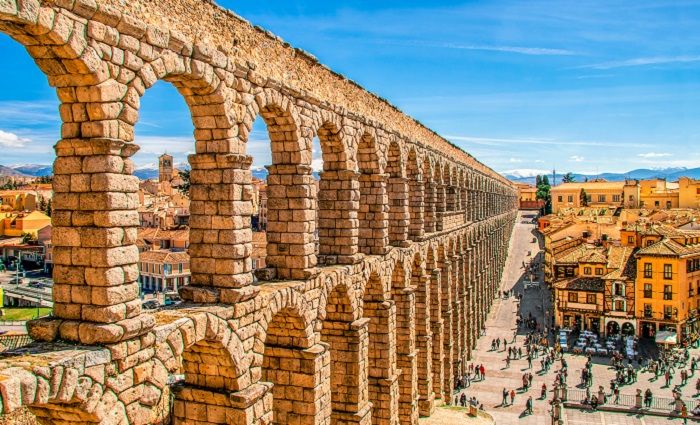
Perhaps you are wondering how much water would this structure transport to the city of Segovia. Well, luckily for you, scientist have been investigating this for quite some time, in order to understand the potential erosion this structure may have suffered.
Thanks to the research of Francisco Granero Martin we know the exact details. He calculates the daily water volume at the aqueduct of Segovia as 180,104 cubic feet with a velocity of of about 2.5 feet per second! The total length that water runs in this aqueduct is about 10 miles. It runs from the Frio River into the heart of Segovia.
4. Not Always So Pretty
It might surprise you to know that this beautiful monument, which is so clean in this day and age, hasn’t always been that way. We know from archival work in the city that builders added pipes for business use for the growing textile industry. They needed and produced a lot of wastewater. Segovia was an important industrial town during the Spanish Golden Age of the 15th and 16th century.
According to Angel Garcia Sanz, the following parishes would have benefited from this water use: St Eulalia, El Salvador, St Clement and St Columba. As a result these parts of the aqueduct and the city would have been quite smelly from the waste created during the textile manufacturing process. Not to mention, the wastewater would have stained the stones of the aqueduct, making it less appealing than it is now.
3. Related to Other Aqueducts
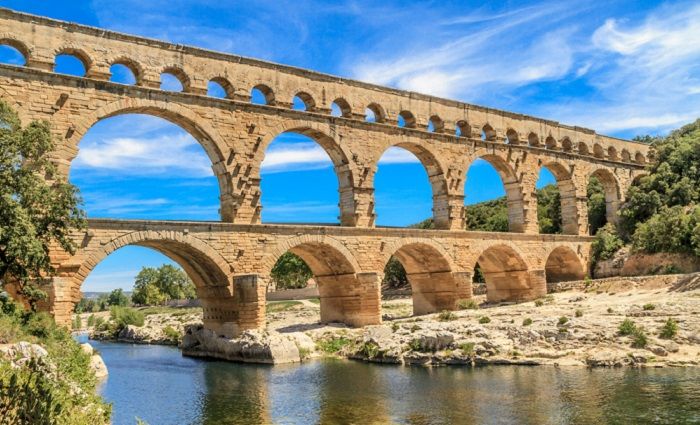
Like most things in the Roman world, there was no need to reinvent the wheel with every construction. As a result, we know that the aqueduct of Segovia borrows and establishes connections with other aqueducts across Spain and the Roman world.
According to Leonardo Fernandez Troyano, it is very likely that the aqueduct in Segovia, like the one in Tarragona, borrow in aesthetic and construction technique from the Pont du Gard in Nimes. At the same time, it seems that Segovia then would have influenced the aqueduct of Los Milagros in modern day Merida.
2. Aqueduct Full of Legends
As many old structures do, the aqueduct of Segovia has a series of legends attached to it. The veracity and origin of these is hard to know for sure. However, they make for interesting anecdotes to spark your imagination as you take those amazing pictures.
One of the oldest legends about the aqueduct is related to its construction. Rumor has it that perhaps Hercules, or one of his children, actually built the impressive structure. Such a feature of engineering could only be the work of the gods, right?
Another popular legend in the city is a story involving a girl, the devil, and a virgin. It seems that before the aqueduct was built, a little girl had to walk to the top of the mountain every day to fetch water. One day, tired of doing this, she asked for help and the devil started building the structure. Concerned for the soul of the child, a virgin stepped in to protect her.
This is the reason why there is a statue of the Virgin del Carmen in one of the niches of the aqueduct. According to Narciso Casas, the niches for the statues and the figure of the Virgin, were installed by the Catholic monarchs in the 15th century.
1. UNESCO Heritage
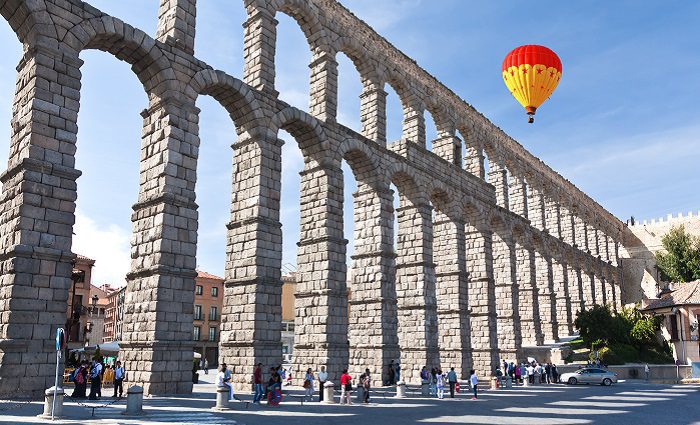
The aqueduct in Segovia has been part of the UNESCO World Heritage list since 1985, along with the rest of the historic center of the city. They earned their spot for a few reasons. First and foremost, due to the magnificent state of conservation of the structure.
Also, UNESCO’s entry praised the structure and Segovia for its overall integrity. In total there are 134 hectares of land in original condition, much of which is traversed by the aqueduct.
Want to know the coolest way to see this aqueduct that’s larger than life? Hob aboard a hot air balloon for a breezy view from above before exploring on foot!
Not ready to book a tour yet? See our Segovia Guide for more info.
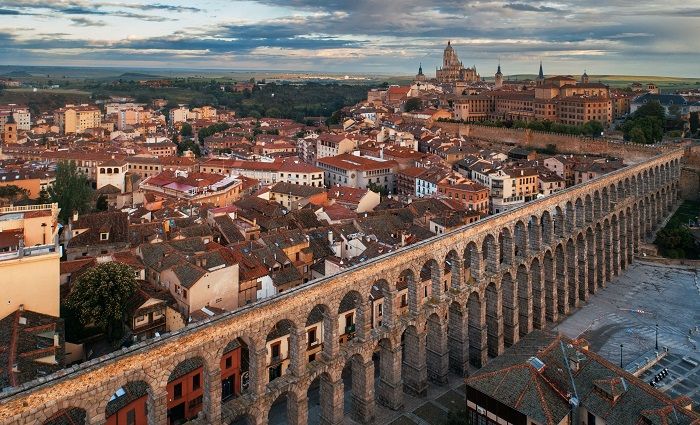
Where To Stay in Segovia
Come to Segovia, Spain, to see the Roman Aqueduct, the Cathedral, and enchanting Alcázar. Find out where our local experts recommend staying in this ancient city. You’ll find great hotel deals to make your stay memorable.
